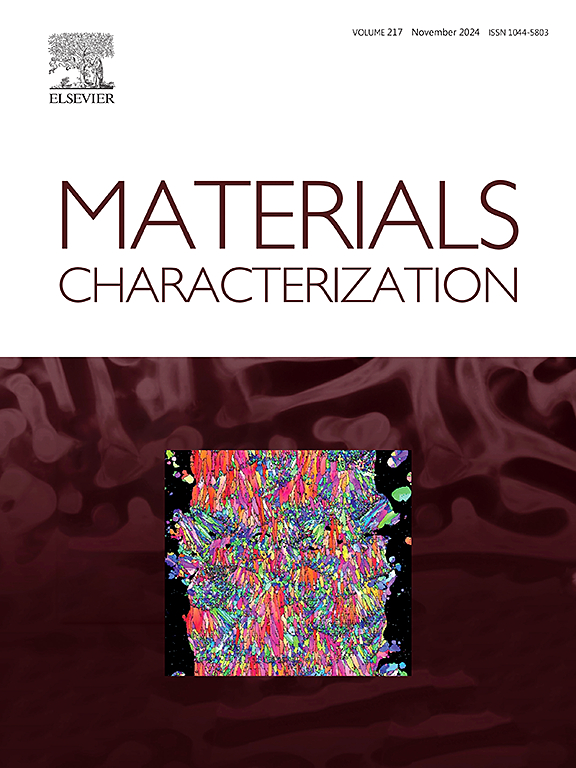直接能量沉积过程中改变热循环对Ti-6Al-4V显微组织特征及相组成的影响
IF 5.5
2区 材料科学
Q1 MATERIALS SCIENCE, CHARACTERIZATION & TESTING
引用次数: 0
摘要
激光和增材制造技术正在彻底改变工业格局。这些技术为创建复杂组件提供了无与伦比的精度、效率和灵活性。这些技术的集成允许快速原型和小批量定制零件的生产。工业界特别感兴趣的是Ti-6Al-4V钛合金的3D打印,因为它们的独特性能。研究了不同策略沉积时层间温度变化的相变路径。用电子显微镜、x射线衍射仪和膨胀仪对直接激光沉积法制备的样品进行了分析。我们发现,随着层间温度的变化,β相分数发生了显著的变化。结果表明,层间温度的升高使沉积Ti-6Al-4V合金的静态和动态性能得到改善,这主要是由于相组成的改变。层间温度可以通过不同的沉积策略来调节。增材制造过程的突然循环特性促进了这种不寻常的转换序列。这项工作提供了一个完整的和一般的相变途径的描述,通过这些观察。讨论了相变与层间温度的关系对力学性能的影响。本文章由计算机程序翻译,如有差异,请以英文原文为准。
Features of the Ti-6Al-4V microstructure and phase composition formation by changing the thermal cycle during the process of direct energy deposition
Laser and additive manufacturing technologies are revolutionizing the industrial landscape. These techniques offer unparalleled precision, efficiency, and flexibility for creating complex components. The integration of these technologies allows for rapid prototyping and the production of custom parts in small batches. Of particular interest to industry is the 3D printing of Ti-6Al-4V titanium alloys because of their unique properties. We have studied the phase transformation pathway during interlayer temperature change when different strategy deposition. Samples manufactured by direct laser deposition were analyzed using electron microscopy, X-ray diffraction and dilatometry. We demonstrate that a significant β-phase fraction variation occurs with interlayer temperature change. We reveal that the increase of interlayer temperature enhances the static and dynamic properties of deposited Ti-6Al-4V alloy due to the modification of phase composition. Interlayer temperature may be adjusted with various deposition strategies. The abrupt cyclic nature of the additive manufacturing process is what has facilitated this unusual transformation sequence. The work provides a complete and general description of the phase transformation pathway, informed by these observations. The implication of the phase transformation on mechanical properties is discussed in relation to interlayer temperature.
求助全文
通过发布文献求助,成功后即可免费获取论文全文。
去求助
来源期刊

Materials Characterization
工程技术-材料科学:表征与测试
CiteScore
7.60
自引率
8.50%
发文量
746
审稿时长
36 days
期刊介绍:
Materials Characterization features original articles and state-of-the-art reviews on theoretical and practical aspects of the structure and behaviour of materials.
The Journal focuses on all characterization techniques, including all forms of microscopy (light, electron, acoustic, etc.,) and analysis (especially microanalysis and surface analytical techniques). Developments in both this wide range of techniques and their application to the quantification of the microstructure of materials are essential facets of the Journal.
The Journal provides the Materials Scientist/Engineer with up-to-date information on many types of materials with an underlying theme of explaining the behavior of materials using novel approaches. Materials covered by the journal include:
Metals & Alloys
Ceramics
Nanomaterials
Biomedical materials
Optical materials
Composites
Natural Materials.
 求助内容:
求助内容: 应助结果提醒方式:
应助结果提醒方式:


